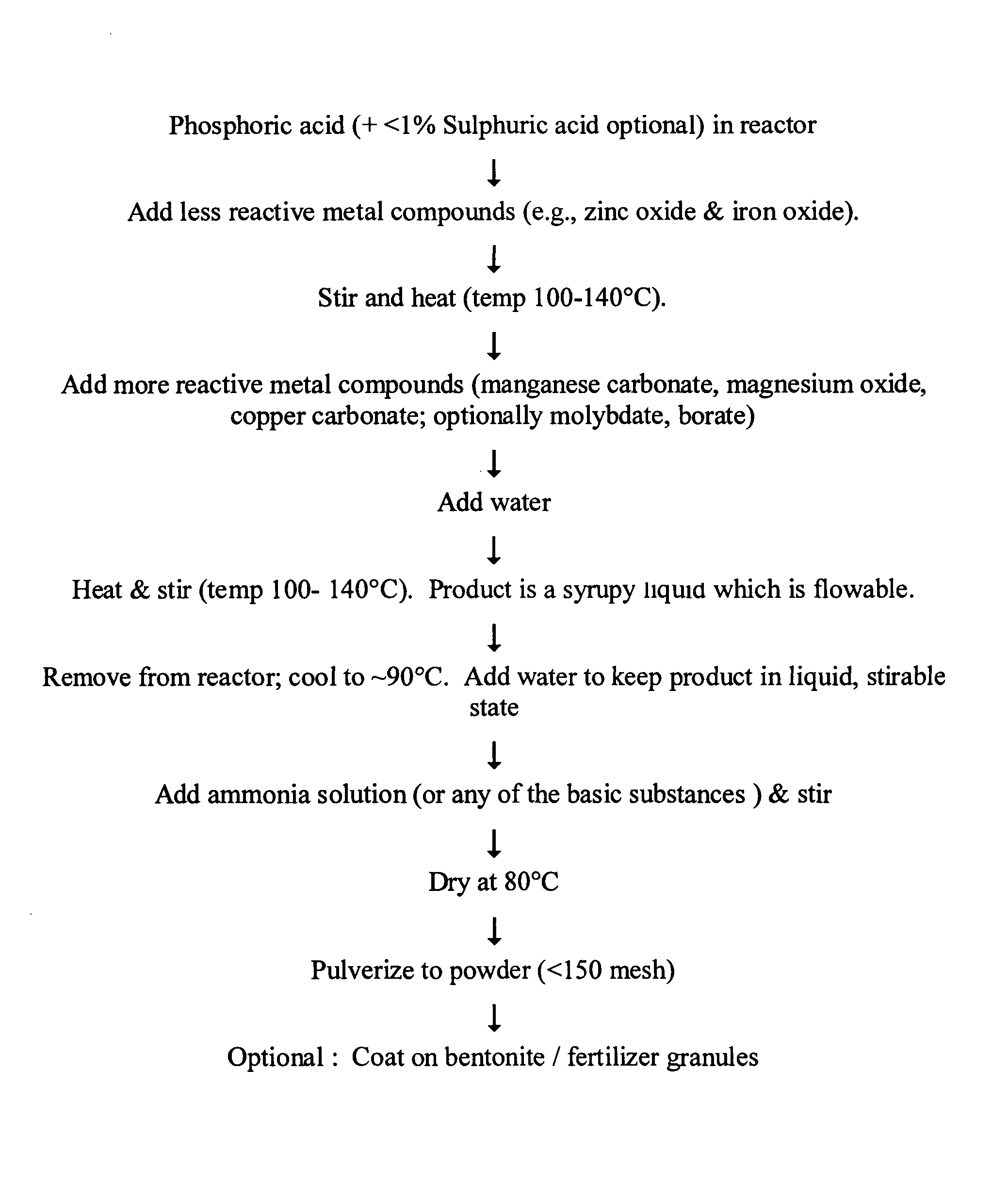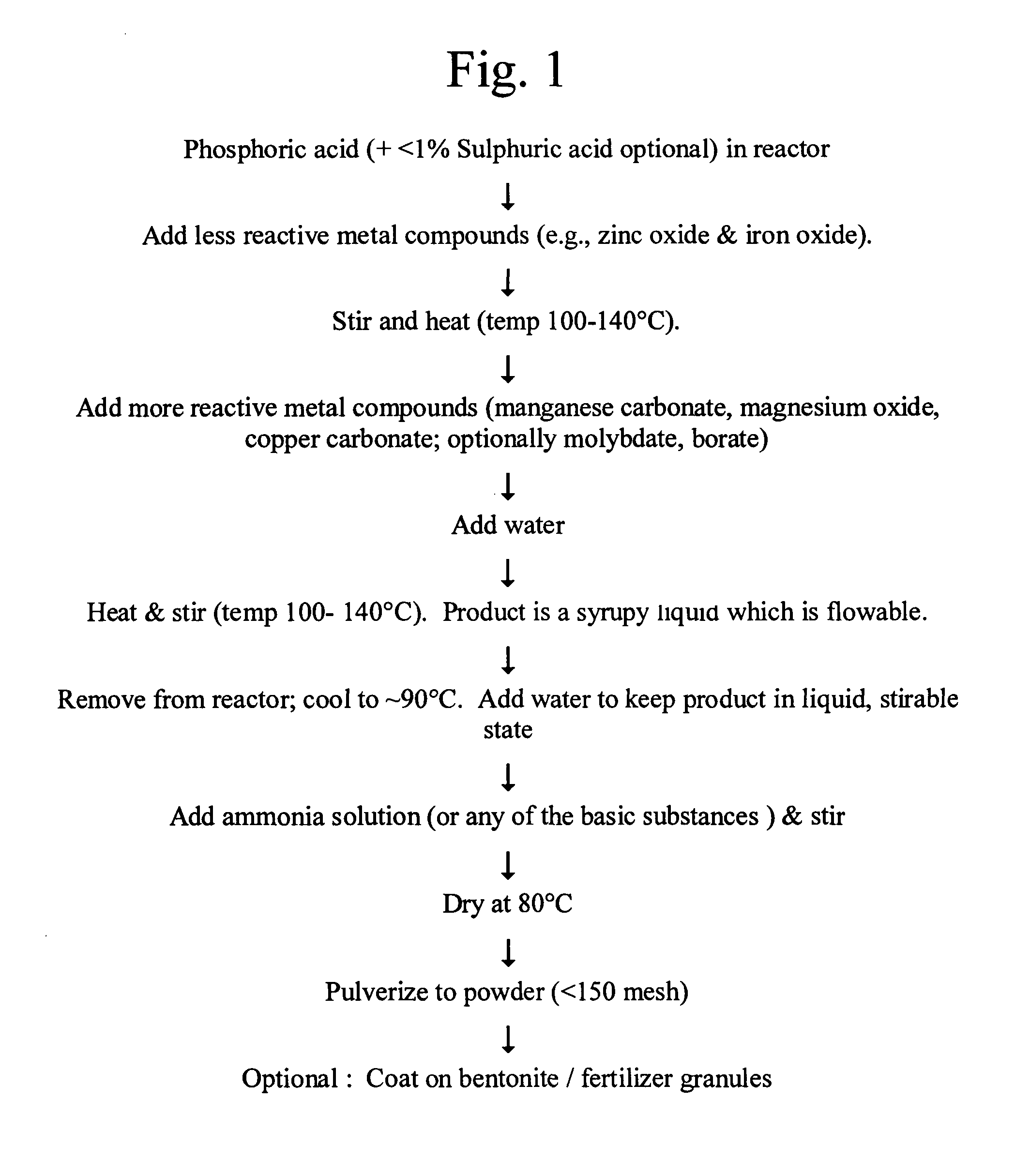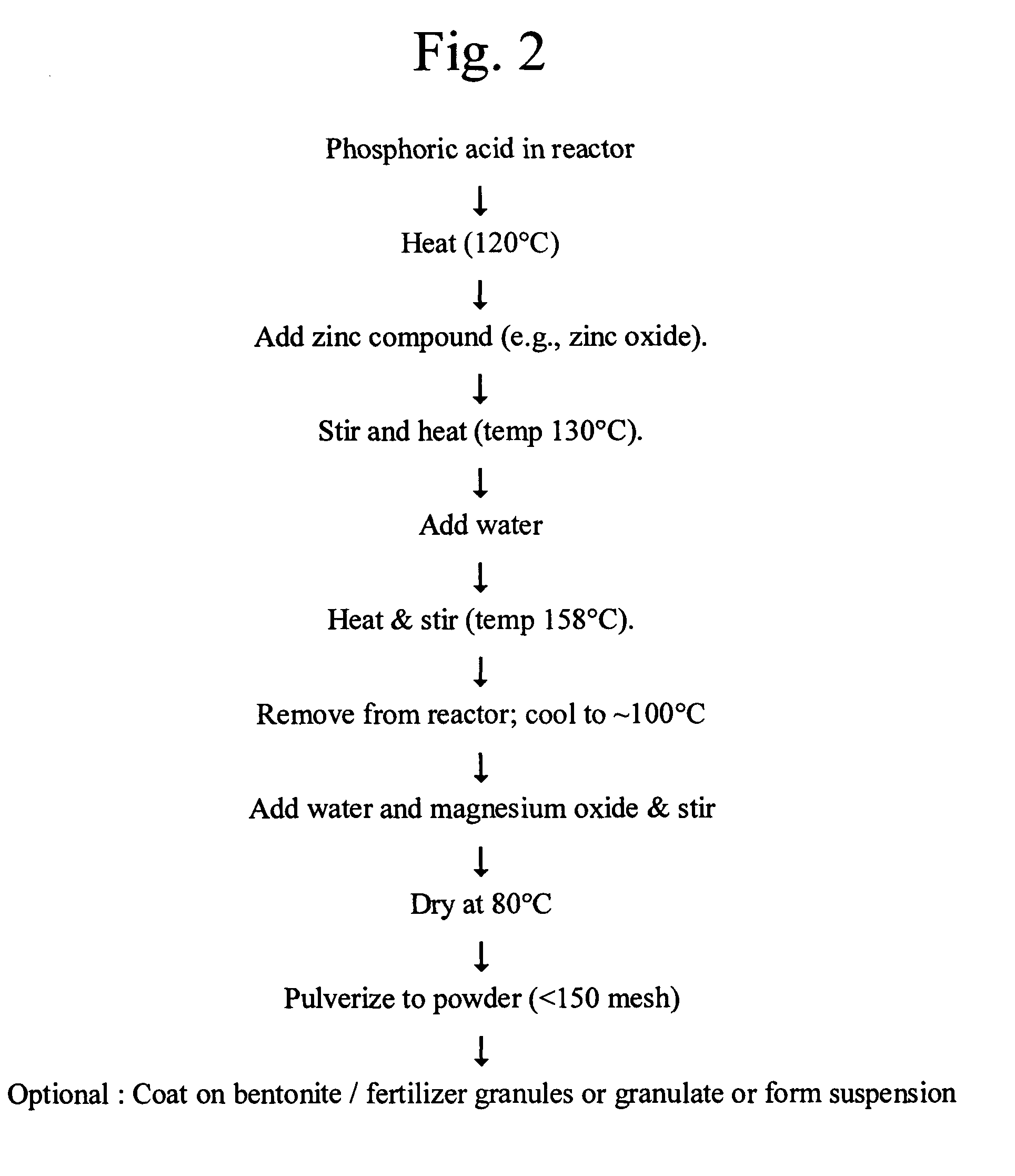Micronutrient fertilizers and methods of making and using the same
a micronutrient fertilizer and micronutrient technology, applied in the field of fertilizers, can solve the problems of poor fertilizer-use efficiency, contaminating water bodies, and unable to meet the needs of agriculture, and preventing widespread use of agricultur
- Summary
- Abstract
- Description
- Claims
- Application Information
AI Technical Summary
Benefits of technology
Problems solved by technology
Method used
Image
Examples
example 1
Molar Ratio Zn:P=1:1.75; NH4OH Neutralized
[0143]The fertilizer of this example one was produced from phosphoric acid and zinc oxide in the molar ratio Zn:P=1:1.75. Commercial grade phosphoric acid (58.5% P2O5), 21.2 grams, was placed in a beaker and 8.4 grams zinc oxide was added. Two milliliters of water was added and the suspension was stirred with a glass rod. It was then heated in a muffle furnace at 140° C. After 30 minutes the zinc oxide dissolved and a nearly clear solution was obtained (some white crystals were observed, possibly due to precipitation of zinc phosphates). The temperature of the liquid at this stage was 120° C. The beaker was removed from the furnace and 3 milliliters of water was added to it, and stirred. The beaker was placed once more in the furnace and heated further for another 30 minutes and then removed. At this stage, the liquid had the consistency of a thick syrup and the reactant temperature was 135° C.
[0144]A small sample was taken af...
example 2
Molar Ratio Zn:P=1:1.75; NH4OH and MgO Neutralized
[0146]This sample was prepared similarly to Example 1, except that the fertilizer product was neutralized with 2 grams of magnesium oxide (60%) and 15 milliliters liquor ammonia (25% NH3), to a pH of 4. It was then dried as described above and ground by hand. The product yield was 30.2 grams and the zinc content of the product was 22.3 weight %. The product was light and could be more easily ground than the sample which was neutralized with ammonia alone.
example 3
Zinc Fertilizer Production (Prototype Scale)
Molar Ratio Zn:P=1:1.75; NH4OH Neutralized
[0147]The reactor vessel was a silica brick-lined MS vessel with a stirrer and electrical heaters. 10 kilograms of phosphoric acid (58.5% P2O5) was poured into the vessel. 3.92 kilograms of zinc oxide was then added with stirring. One liter of water was then added and heating was started. When the liquid temperature reached 125° C., the sample was nearly clear except for some crystals of zinc phosphates.
[0148]Three liters of water were thereafter added to the liquid and heating was continued. The liquid became syrupy when its temperature had increased to 135° C. Heating was stopped and the liquid was poured into a neutralization vessel. The vessel was made of SS 316L, and was equipped with a stirrer. It was double-walled with a water-cooling arrangement. When the temperature of the liquid came down to around 85° C., 2 liters of water was added, and it was stirred. A liquor ammonia solution (25% NH3...
PUM
 Login to View More
Login to View More Abstract
Description
Claims
Application Information
 Login to View More
Login to View More - R&D
- Intellectual Property
- Life Sciences
- Materials
- Tech Scout
- Unparalleled Data Quality
- Higher Quality Content
- 60% Fewer Hallucinations
Browse by: Latest US Patents, China's latest patents, Technical Efficacy Thesaurus, Application Domain, Technology Topic, Popular Technical Reports.
© 2025 PatSnap. All rights reserved.Legal|Privacy policy|Modern Slavery Act Transparency Statement|Sitemap|About US| Contact US: help@patsnap.com



